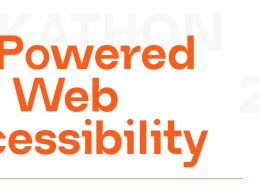AI implementations can be costly and drain their allotted budgets. Thankfully, you can learn how to reduce your expenses for it through the tips listed here.
How To Reduce Cost Overruns For AI Implementation Projects
Artificial intelligence (AI) has emerged as a game-changing tool with immense potential for businesses across various industries. Integrating it into business processes can yield transformative benefits. By harnessing its power, organizations can enhance their operations, gain valuable insights, streamline processes, and drive growth.
However, it’s crucial to keep project costs under control. After all, cost overruns can impede progress, strain financial resources, and jeopardize the success of an AI implementation project.
Nonetheless, with careful planning, diligent monitoring, and proactive measures, businesses can greatly reduce the risk of cost overruns and ensure smooth and cost-effective AI integration. To accomplish that, here are some tips you can follow:
Conduct a thorough cost analysis
Conducting a comprehensive cost analysis is essential before embarking on an AI implementation project. Doing so can allow you to identify all the associated expenses and develop a realistic budget. For example, one of the expenses you should determine is the cost of infrastructure needed to support the AI.
According to Future Forge, the analysis must encompass hardware and software costs, licensing fees, and personnel expenses. Hardware costs may involve acquiring or upgrading servers, specialized AI processors, or other necessary equipment. Additionally, software expenses encompass licensing fees for AI platforms, development tools, and any third-party applications or libraries essential for the project.
By meticulously evaluating these factors, businesses can understand how AI tools derive their costs and avoid surprises throughout the project lifecycle.
Plan your project carefully
To mitigate the risk of cost overruns, developing a comprehensive and detailed strategy that factors all project phases, timelines, and associated costs is vital. After all, a well-crafted plan lies at the core of every successful project—AI implementation isn’t an exception.
To start, identify and define the various project phases. Some of them are data gathering and preparation, model development, testing, deployment, and ongoing maintenance. Each phase should have a clear timeline and allocated resources to facilitate effective cost management.
By breaking down the project into manageable stages, you can better assess the financial requirements at each step, minimizing the chances of unexpected cost escalations. Also, meticulously outlining each step can let you gain clarity on the financial implications and ensure a smoother AI implementation process.
Implement effective cost-control mechanisms
Regularly monitoring your project’s progress can help you identify potential troubles early on and take corrective action before they become more significant issues. If you do that, you can ensure it stays on track and within budget.
With project management tools and software, you can maintain visibility into your AI spending. They also allow you or your team to keep a close eye on costs and identify any deviations from the budget. They can put you in a position where you can make immediately informed decisions and take necessary actions when required.
Meanwhile, conducting systematic cost reviews is vital. Periodically assess the project’s financial status and compare it to the budget to identify potential cost overruns and come up with workarounds in the budget to implement AI. Performing these evaluations provides an opportunity to analyze the root causes of deviations and determine appropriate mitigation strategies.
Don’t forget that effective communication with stakeholders is crucial during these processes. Telling them about these processes ensures everyone knows the financial situation and aligns on the necessary steps to address emerging cost concerns.
Define clear project requirements
Scope creep occurs when project objectives expand beyond the initial plan due to haphazard additions or overlooked considerations, causing the project to deviate from its intended path. As you can imagine, it can lead to budget overruns and delays.
Lay a solid foundation and minimize the risk of scope creep that may derail your AI implementation project. To do so, establish and communicate your project requirements upfront. Gather your team and outline the project’s objectives, functionalities, and deliverables.
And as always, engage stakeholders from different departments to ensure a holistic understanding of the project’s needs and goals. By involving diverse perspectives, you can anticipate potential challenges, streamline communication, and foster a shared sense of purpose throughout the implementation process.
Choose the right AI solutions and providers
Choosing the right AI service provider is critical when integrating AI into your business. Be sure to carefully vet the candidates based on their solution’s scalability, ease of integration, and maintenance costs. It’s recommended to do so as it can minimize additional costs, reduce business operations disruptions, and seamlessly integrate with your existing systems.
With that said, start discussions with multiple vendors. Engaging with different providers can help you find one with competitive pricing and favourable terms.
Also, prioritize seeking out vendors who offer transparent pricing models and provide detailed breakdowns of costs associated with their AI solutions. This transparency allows you to make informed decisions and accurately evaluate the financial impact of each option.
And to further optimize costs, prudently negotiate contracts with vendors. Doing so can ensure that the pricing aligns with the value delivered by their AI solution and ultimately lessens the cost overrun risk.
Develop a risk management plan
AI implementation projects can be risky, and unexpected events can negatively impact project costs. That’s why developing a robust risk management strategy is crucial to minimize the risk of cost overruns and keep your project on the right path.
To develop a risk management plan, start by identifying potential risks specific to your AI implementation project. These risks could range from technical challenges and data quality issues to resource constraints or regulatory compliance concerns.
Once you’ve identified the risks, it’s time to outline strategies to mitigate them. A good risk mitigation strategy involves establishing contingency plans, allocating backup resources, or implementing preventive measures to address identified vulnerabilities.
The goal in developing a risk management plan is to proactively prepare for the unexpected and have a plan in place to navigate any obstacles that may arise.
Wrapping up
Unfortunately, some businesses and entrepreneurs underestimate AI as a versatile business tool, and this is why most of them fall into the pitfall of experiencing cost overruns when implementing it. Thankfully, with the tips listed above, you can position your AI implementation for success. So, be sure to plan it well, perform cost analysis, prepare for risks, and hire the right service provider to avoid shelling out more than you need.










